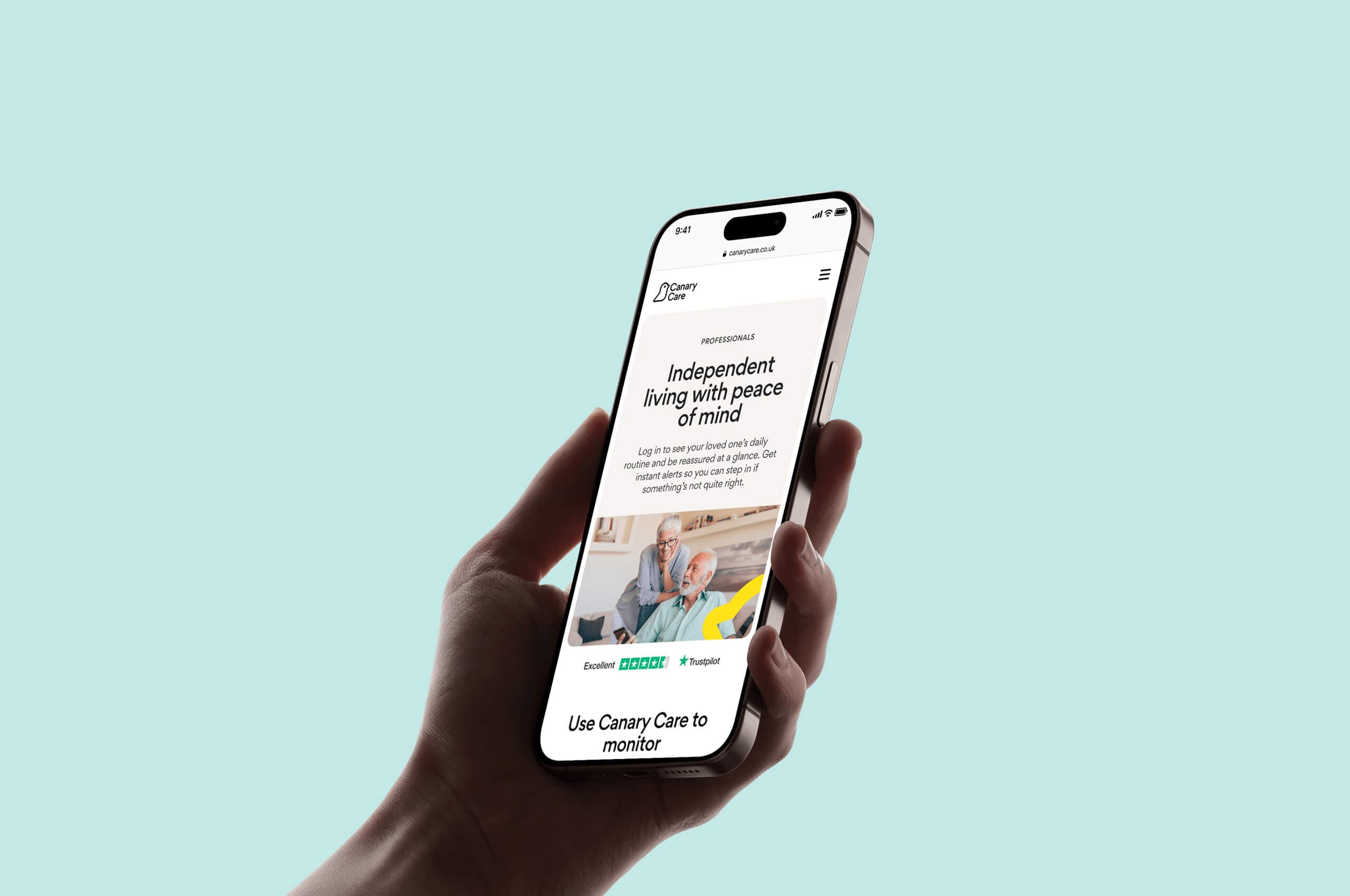How to create a user-centric digital experience

It’s easy to find numerous stats that demonstrate how vital thoughtful design is to user experience and the value that a website or digital product will deliver.
88% of consumers are less likely to return to a site after a poor experience. A well-crafted, frictionless UX design can raise conversion rates by 400%.
While there are design principles and best practices to follow, ultimately, you have to create the best possible experience for your users. Call it user-centric, user-centred or human-centered design – the core objective remains the same: create something that’s highly usable, efficient and satisfying for the end user.
In this post, we’ll look at how to create a user-centric digital experience:
- Defining core users and focusing on what they will value
- Map user journeys and key tasks
- Using UX principles to prioritise usability and simplicity
- Designing for accessibility
- Gathering feedback and improving iteratively
Know your core users
Good user-centric design starts with empathy. Who are your main users? What do they need to achieve? What pain points might they have that you need to address? Undertaking a discovery process is key to unlocking this insight. Through discovery, you and an external expert partner will be able to challenge assumptions around your users and what they want or need from you. You’ll also be able to focus on your core users and delivering value for them rather than trying to cater to as large a group as possible, in which case you’ll likely end up pleasing no one.
Key tasks & journey mapping
Once you know who your users are and their top-level objectives, you can get into more detail on the how, what, why and when. You’ll want to identify the key tasks your users will undertake on your platform, such as making an enquiry, obtaining a quote, completing a transaction or simply gathering information. In the design phase of a project, your digital partner will then map out the journeys that your users will take to ensure the focus remains on simplicity and efficiency. In some cases, these can be developed into high-fidelity prototypes that can be shared for initial feedback, helping you to identify and address potential drop-off points or opportunities to simplify and streamline the journey.
Prioritise usability & simplicity
It’s natural when humans are involved that psychology will play a part. When it comes to creating user-centric experiences, it’s about focusing on usability and simplicity, and there are a few psychological or behavioural principles that can help guide that. Cognitive load, in terms of UX, refers to the required effort by users to carry information relevant to their ultimate objective, absorb new information and keep track of their objective. This is closely related to Miller’s Law, which states that the average person can keep up to 7 items in their immediate memory. Another theory, Hick’s Law, states that the time it takes to make a decision increases with the number and complexity of choices.
All of this boils down to reducing choice (for example, simplifying navigation only to key pages), breaking content or forms up into manageable chunks or steps, and making things as obvious to the user as possible. Other design considerations – such as white space, icons and interactive elements – can all be incorporated to create an experience focused on delivering value to the user in the most effortless way possible.
Design for accessibility
There is a social – and in some cases, legal – responsibility to create a digital experience that’s inclusive and accessible to everyone. Since 2018, it has been a legal requirement for public sector organisations to ensure newly produced digital platforms conform to accessibility standards of at least WCAG 2.1. In the EU, the European Accessibility Act comes into force in June 2025, mandating websites and apps to comply with minimum accessibility standards. In addition, there’s also a commercial benefit to ensuring accessibility. In the UK alone, there are 16 million disabled people, and that adds up to a spending power of £274 billion per year for households with at least one disabled person.
Designing and developing for accessibility is an undertaking in terms of upfront investment of time and resources, but the benefits are clear. An expert partner can guide you on how to comply with certain standards, but basic things like sufficient contrast in your brand colours and readable fonts can have a significant impact if not considered from the start. Other specific accessibility features can be incorporated at the development stage, such as:
- Enable a user to navigate through a page without scrolling
- Providing alternative colour schemes
- Ability to disable or reduce animation
- ADHD assistive overlays, which can block out sections of the page
- Screen reader systems
Test, gather feedback, improve
In user-centric design, iteration is key. You won’t get everything right on the first go, and even if you get most things right, things in the digital space move fast, and user expectations change. It’s important to monitor user behaviour and experience on your site on an ongoing basis, analyse results and use this insight to iterate and improve. This can (and should) include both quantitative data and qualitative feedback. Tools and platforms like Google Analytics can help you keep track of fundamental things like traffic, engagement rates, and exit pages. To go a bit more in-depth, you can use a tool like Hotjar to review heatmaps and session recordings, and even prompt users with feedback surveys. You can then work with your digital partner to use strategy sessions and backlogs to prioritise feature development and work on things that will be of the biggest benefit to users.
Key takeaways
- Poor UX drives users away: 88% of users won’t return after a bad experience; good UX can boost conversions by 400%.
- Focus on user-centric design: Prioritise usability, efficiency, and satisfaction over simply following design trends.
- Understand your core users: Use discovery processes to define key users, their goals, and pain points.
- Map key tasks and journeys: Identify important user actions and design simple, efficient paths for them.
- Prioritise usability and simplicity: Minimise cognitive load and decision-making friction using principles like Hick’s and Miller’s Laws.
- Design with accessibility in mind: Meet legal standards (e.g. WCAG 2.1), but also tap into a wider market and improve overall UX.
- >Test, iterate, and improve: Use data (analytics, heatmaps, surveys) and user feedback to continuously refine the experience.
👉 Ready to transform your digital experience? Let’s talk about how we can help you build a truly user-centric platform that drives results.




